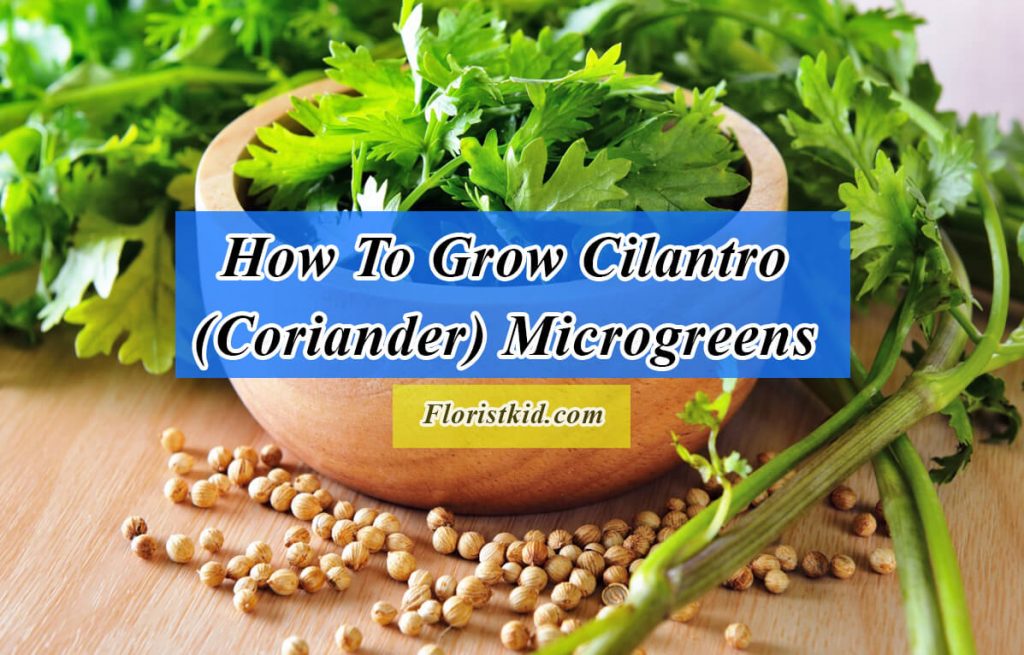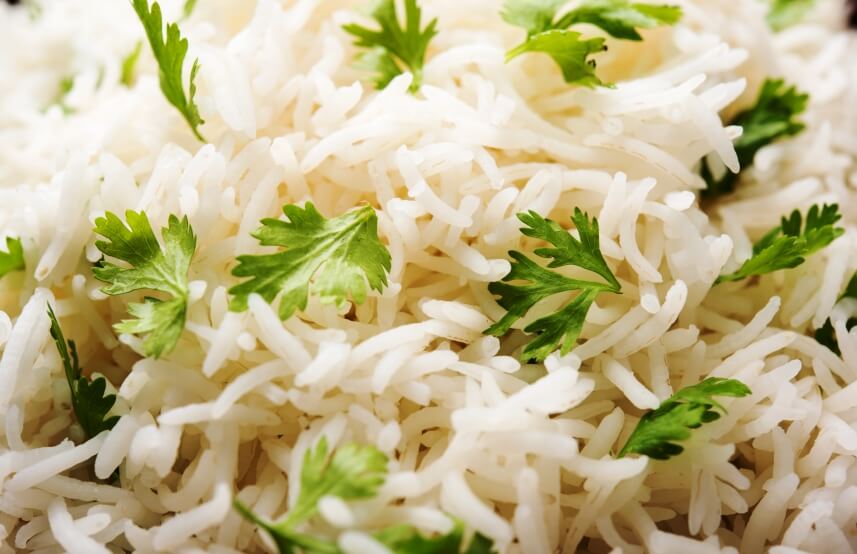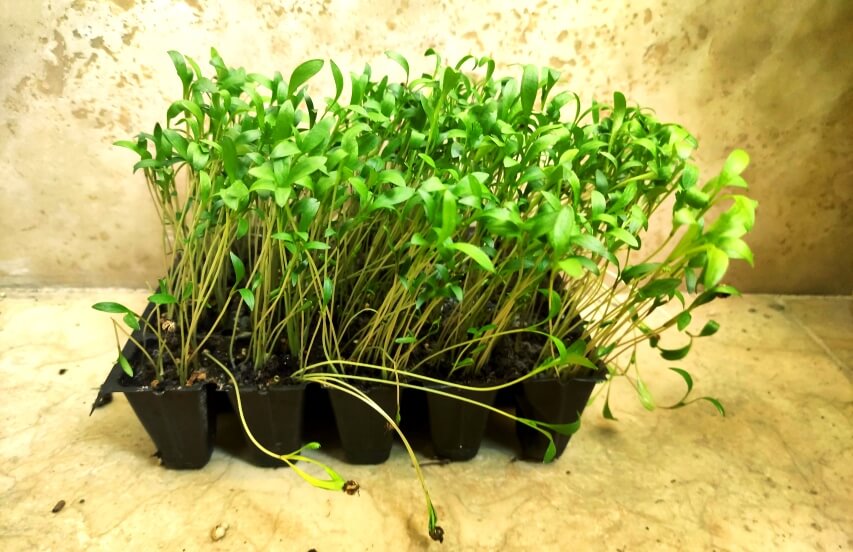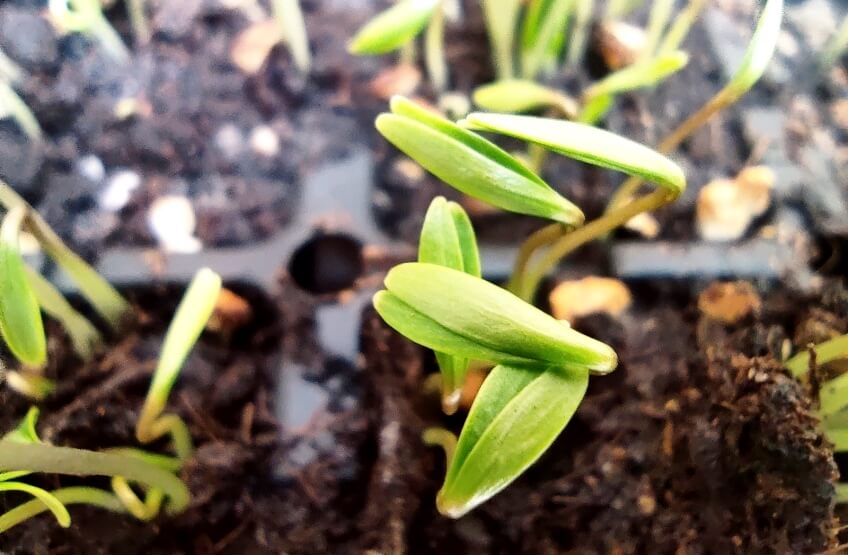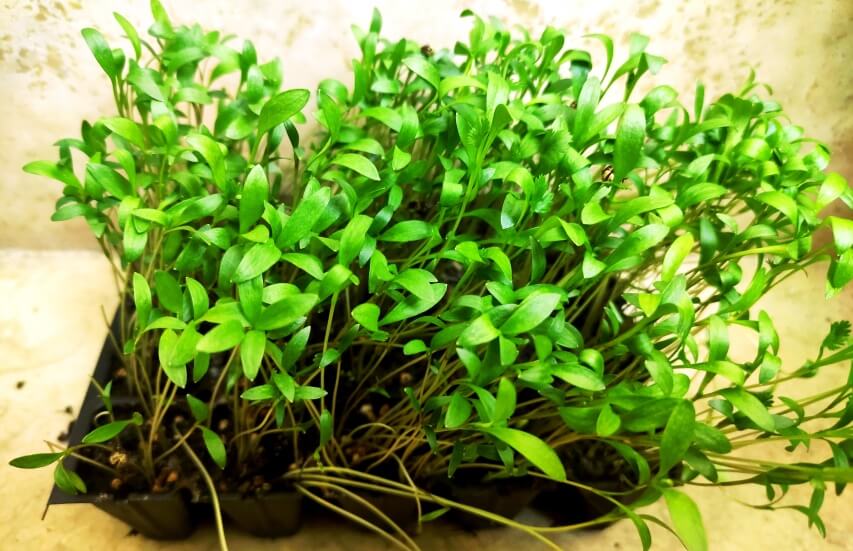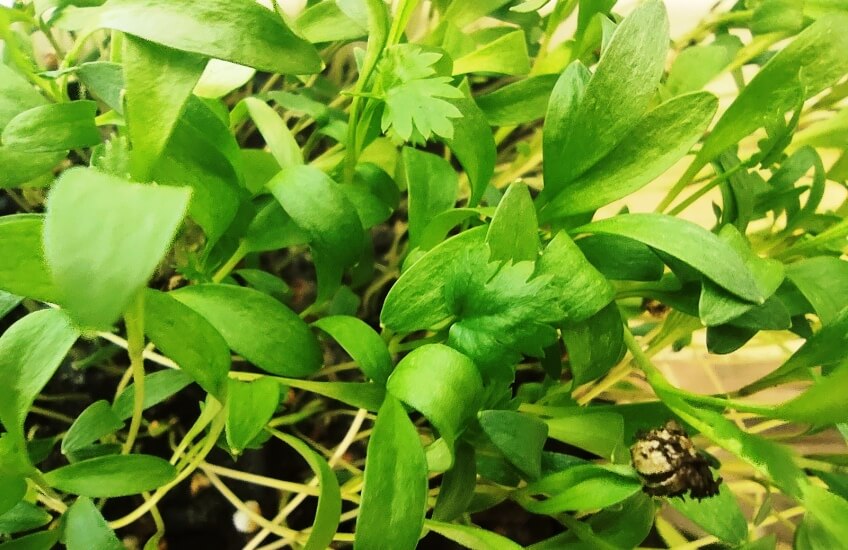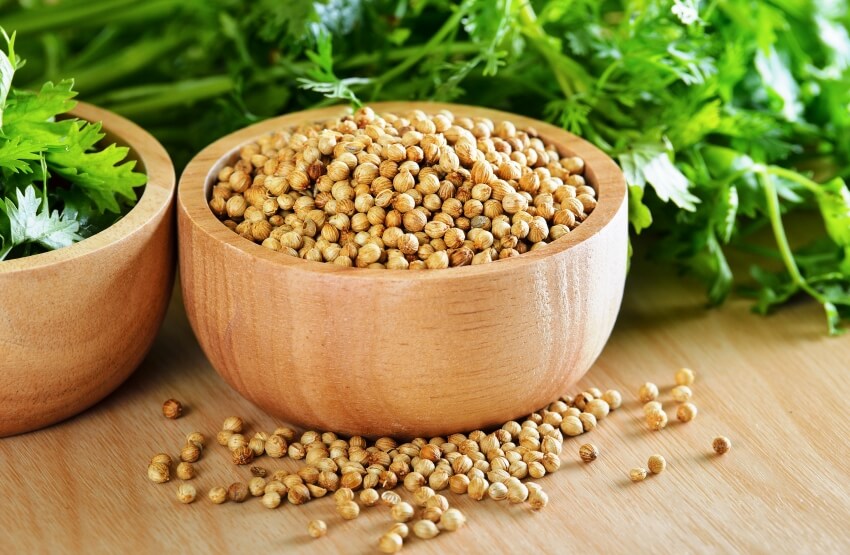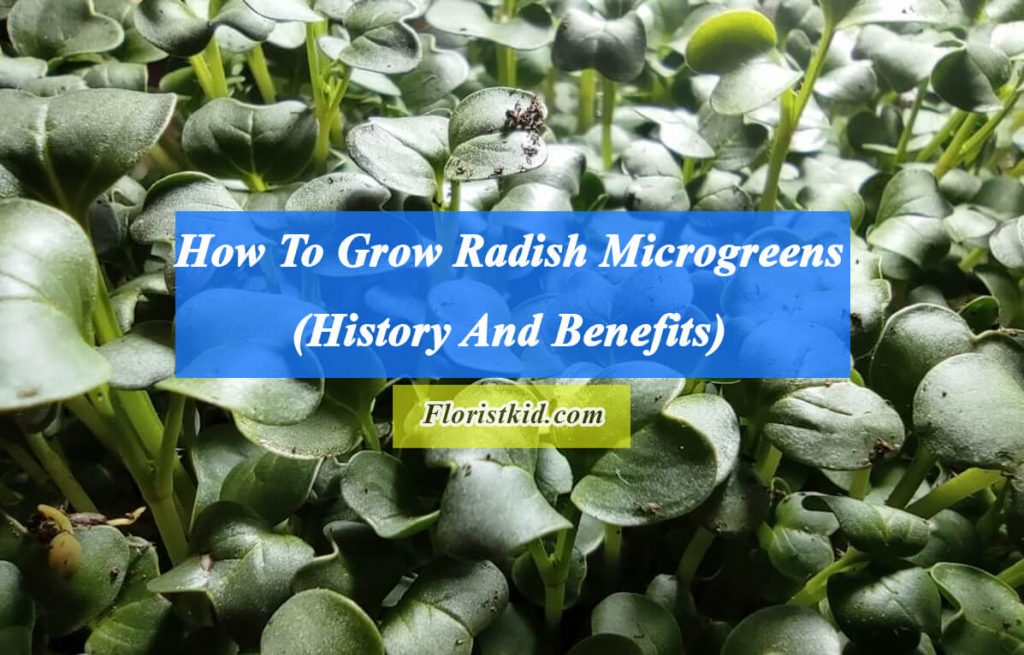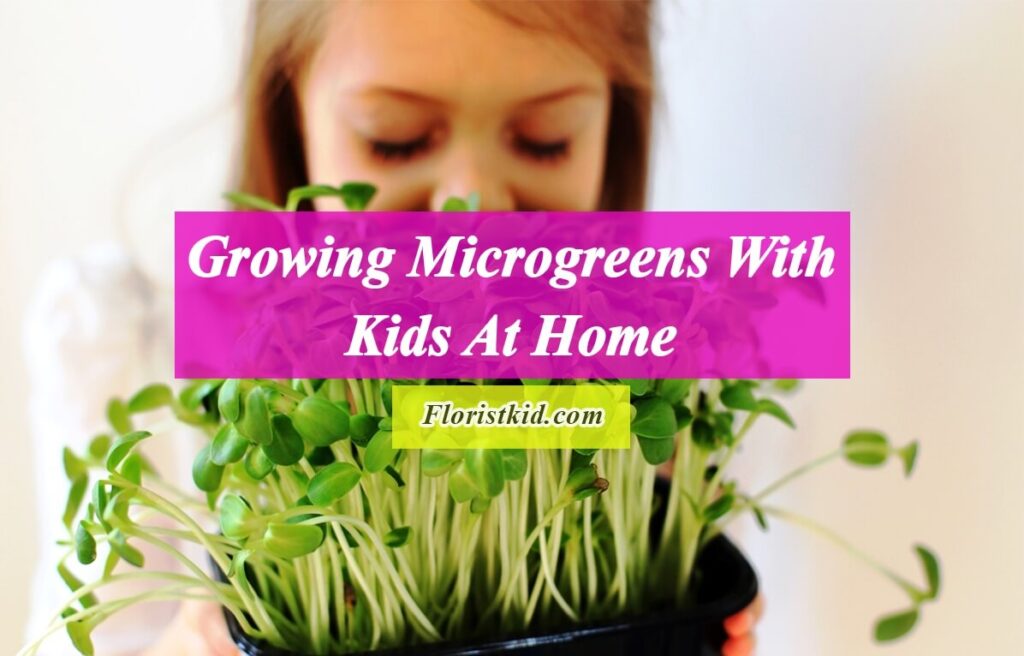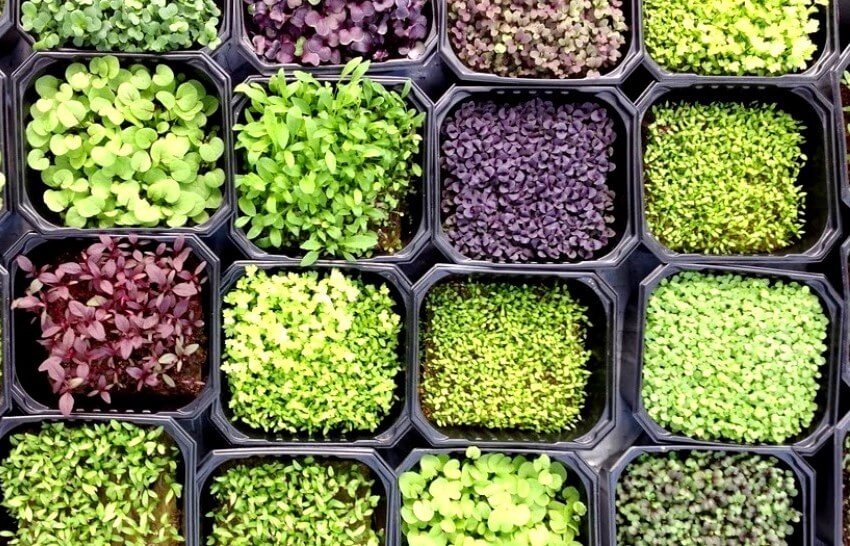Cilantro microgreen, also known as coriander microgreen, is a popular microgreen among chefs. It has a powerful scent that can overwhelm other flavors. Despite being tough to grow and achieve good yields, it makes a beautiful specialized microgreen to offer.
Coriander gets its botanical name from the Greek word koris, which means “bedbug.” Today, its leaves and seeds are valued in various cuisines worldwide, including Mexican, Thai, and Indian.
If Like to know more about microgreens, check these articles:
<<What Are Microgreens >> and <<Popular Microgreens For Chefs>>
Cilantro History
Cilantro, sometimes called coriander, is one of the oldest spices in the world. It has been utilized medicinally and culinarily worldwide, dating back to 5000 BC. It is supposed to be from Southern Europe, but it has been around for thousands of years throughout Asia.
This herb was utilized in ancient times by China, India, Egypt, Greece, and Rome for both seeds and leaves. This powerful herb has been used to relieve labor pains and flatulence. Many cultures consider it to be an aphrodisiac, and it can even operate as a narcotic if consumed in big doses. It is also great for chelating heavy metals out of the body.
Cilantro microgreens overview
| Family | Apiaceae |
| Recommended Varieties | Standard Cilantro, Santo |
| Nutrition | Vitamins A, B, C, E, and K, Beta-carotene, Phosphorus, Zinc, potassium, iron, and Calcium. |
| Average days to germinate | 5 to 8 days |
| Average days to harvest (after germination) | 10 to 14 days |
| Difficulty | Medium to difficult |
Nutritional Value of Coriander microgreens
Vitamins A, B, C, E, and K, as well as beta-carotene, calcium, iron, potassium, zinc, and phosphorus, are all found in coriander microgreens.
Vitamin K is abundant in this microgreen. Blood coagulation requires vitamin K, which can be found in dark-green leafy foods. Cilantro microgreens have a vitamin K content comparable to baby spinach. Cilantro is also a good source of vitamin C, which is an antioxidant and a vital nutrient. The vitamin C content of cilantro microgreens is slightly lower than that of an orange.
The carotenoids lutein/zeaxanthin, violaxanthin, and beta carotene, which are fat-soluble antioxidants vital for organ function and protecting cellular structures from harm, are abundant in coriander microgreens.
Cilantro microgreens have three times the amount of beta carotene as mature cilantro leaves. They also have a beta carotene content comparable to carrots and sweet potatoes.
Cilantro has a lot of alpha-tocopherols (vitamin E). Vitamin E is a fat-soluble antioxidant that helps the immune system operate properly. The most popular sources of vitamin E are nuts, seeds, and oils; however, cilantro microgreens offer a fantastic source of vitamin E with considerably less fat. Cilantro microgreens have more than six times the amount of vitamin E found in a serving of sunflower seeds.
Cilantro microgreens health benefits
Cilantro microgreens are delicious. Besides being tasteful, these microgreens have several health benefits:
Eye Protection
Coriander microgreens contain lutein and zeaxanthin. It is worth mentioning that two of the carotenoids, lutein, and zeaxanthin, are critical for eye health as you get older. They have been associated with lowering age-related degeneration and cataracts in particular.
Protects Cells & Organs
Cilantro contains a large amount of carotenoids. These are fat-soluble antioxidants that your body needs to protect your cells and organs from harm.
You might be shocked to know that a serving of cilantro microgreens has the same amount of carotenoids as a serving of carrots or sweet potatoes.
Immune System Boost
Cilantro microgreens contain a lot of vitamin E, which is necessary for your immune system to function properly. One serving of cilantro microgreens can significantly improve your overall health!
Blood Coagulation
Cilantro microgreens are rich in vitamin K, making them an ideal diet for improving blood coagulation (clotting).
How to grow coriander microgreens
Coriander microgreen seeds take five to seven days to germinate and roughly three weeks to harvest, making them one of the difficult microgreens to grow. It is better to grow the green until it reaches the true leaf stage for the optimum flavor. Because of its distinct perfume and flavor, chefs prefer to utilize it alone rather than with other microgreens.
The procedure of growing cilantro microgreens is almost similar to other microgreens. Read the <<Growing Microgreens >> article to learn more about the general method for growing microgreens.
Cilantro true leaf
Cilantro microgreens Growing Tips
Growing tips
- Coriander seeds with split seed hulls have a significantly better germination rate.
- The towel method works well with split seeds. Cover any seeds that have not been split with soil.
Harvesting Tips
- Before harvesting, take the time to remove any excess seed hulls from the greens.
- Ensure that it reaches the true leaf stage.
Coriander microgreen seeds
Washing Tips
- Washing is usually simple, requiring only one or two rinses.
- Keep an eye out for huge seed hulls that stick to the tops of the greens.
- Make sure not to over dry.
Conclusion
Growing cilantro microgreens at home will provide your food a spicy flavor and plenty of nutrients without the expensive cost. It is a slow-growing microgreen, but it is well worth the wait. Coriander microgreens provide your food a fresh flavor. It can be found in various cuisines, including Latin American and Asian meals.
Cilantro microgreens are high in vitamins and minerals, including vitamin C. This microgreen can help to strengthen your immune system, maintain your eyes healthy, enhance blood coagulation, and keep your organs and cells healthy.

